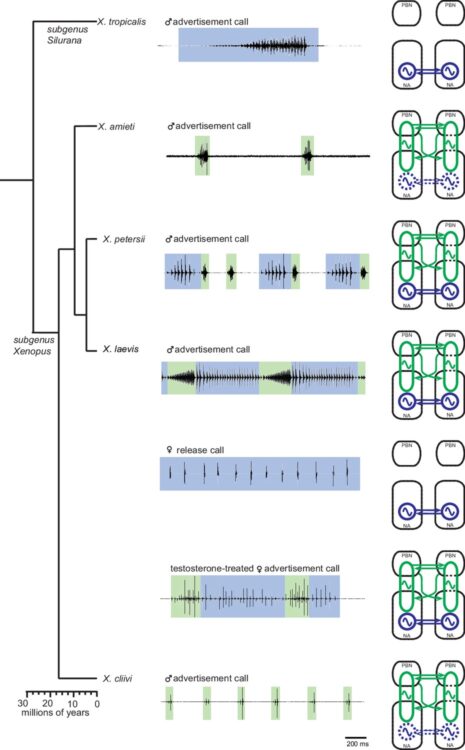
In this paper, we ask how the central nervous system evolves to generate variation in courtship behavior, which is key to reproductive isolation and speciation. To address this question, we developed an ex vivo isolated brain preparation from which fictive courtship vocalizations can be readily elicited, and applied this approach to analyzing the neural circuits generating such vocalization in five Xenopus species. This approach provided us with a rare opportunity to comparatively analyze the function of neural circuits in the context of behavior in adult vertebrates. Our results showed that, although the courtship vocalizations are unique to each species, two central pattern generators (CPGs) that are broadly tuned for fast and slow calls, each with distinct locations, are conserved across species, suggesting that the basic architecture of the neural network inherited through evolutionary lineage is utilized to generate variation in courtship vocalizations across species. Further, our results suggest that differential sensitivity to gonadal steroid hormones across these species may play a role in the species-specific development of fast-type CPGs. In addition, we provide evidence that not all species of Xenopus inherit both fast and slow-type CPGs, while fast ones remain latent as an evolutionary vestige, as seen in other neural networks. Instead, fast-type CPGs are present only in species that produce fast calls.
Elife, 2023 May 15;12:e86299. doi: 10.7554/eLife.86299. Two conserved vocal central pattern generators broadly tuned for fast and slow rates generate species-specific vocalizations in Xenopus clawed frogs. Ayako Yamaguchi 1, Manon Peltier 1 pdf
